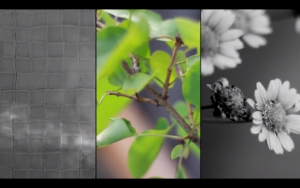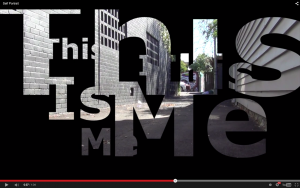I’m not sure what I expected coming into Media 1, but the content covered and the assignments I’ve worked on have definitely surpassed anything I could have predicted. Over the course of semester, I’ve had the chance to develop my skills in a range of areas, working with new technology, learning to engage with the filmmaking process from conceptualisation to the finished product (and all the filming and editing in between), collaborating with others and conducting academic research. This learning experience, punctuated by my work on each of the four project briefs, has been very rewarding, especially in the moments when I finally saw my work coming together.
I experienced a change in thinking when I was editing my work for brief 3. I was watching the half-finished video I had created, and thinking about the different filming techniques and transitions we had discussed in class. I realised the difference this new knowledge made in being able to visualise how I wanted the final video to look and in putting into words the features I wanted to highlight in my work. Since then, I have been noticing these elements in commercials, television shows and movies and reflecting on the effects of each of these stylistic choices.
I have discovered this semester that I learn best by doing. At the start of the semester there were times when I was stuck for ideas, but just by getting started on something, even if it turned out that the something was later scrapped to start again, at least I had something to work from. This is what sparked ideas, and it was an amazing realisation to have about my own way of learning and working.
Given my very limited experience filming and editing, the most challenging aspect of this course was translating my ideas into film. There were times when I knew exactly what I wanted to illustrate on screen, such as the concept of yin & yang as the basis for my self portrait, but I did not yet have the technical skills to edit towards that visual. At times, this was quite frustrating for me, but I managed to work around it to produce a final product I was proud of. I hope that as I grow as a media maker I will be able to find creative solutions to the challenges I face.
In Media 1, I discovered that filmmaking is a very personal activity because I’ve seen my personality come through my work. I also realised that my creative practice involves working towards my original ideas, and weaving in new ideas as they arise. For example, I had a concept for my self portrait, but as I was editing I saw gaps in my work so I thought of new ways to illustrate key aspects of my personality. I believe these “afterthoughts” are the best features of my work, because with them I targeted what was previously missing.
I look forward to learning and overcoming new challenges next semester!

